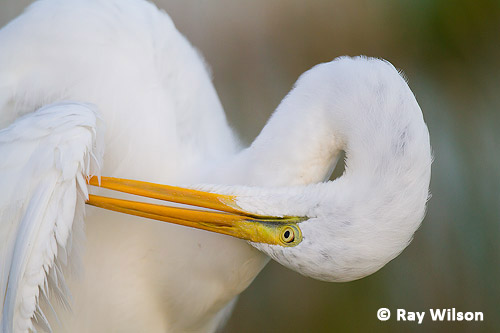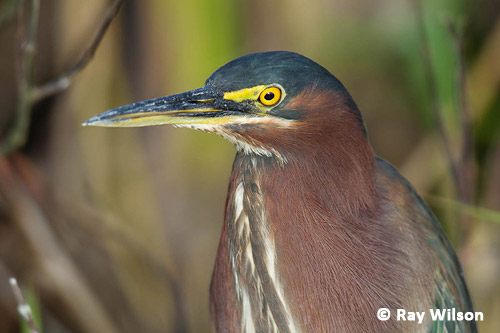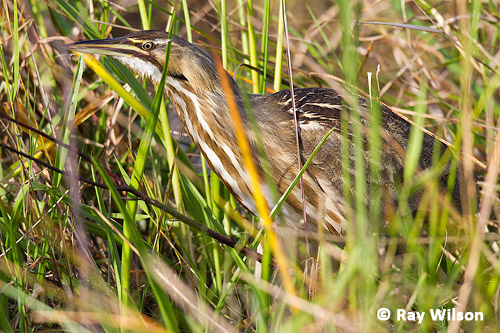
- Home
- Workshops / Tours
- Diary / Blog
- Galleries
- Foreign Trips
- Tasmania 2016
- NE Queensland 2016
- Western Alps 2016
- NE Spain 2016
- Australia's Wet Tropics 2015
- Australia's Top End 2015
- SW Australia 2015
- Switzerland 2015
- Andalucia 2015
- Belize 2015
- Australia 2014
- Switzerland 2014
- Belize 2014
- Bahama Islands 2014
- Switzerland 2013
- Ecuador 2012-2013
- Florida 2011-2012
- Vancouver Island 2011
- Australia 2010
- Peru 2008
- Bulgaria 2007
- Lesvos 2006
- California 2006
- New Zealand 2005
- Extremadura 2005
- Goa, India 2004
- The Gambia 2003
Florida, USA
16th December 2011 - 4th January 2012
Everglades National Park:
Royal Palms
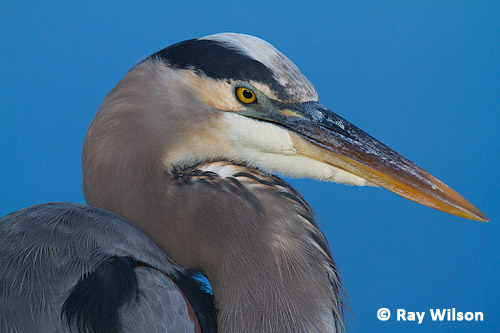
Great Blue Heron (Ardea herodias)
Royal Palms, the first part of the Everglades National Park to be preserved when it was designated as a State Park in 1916, is the most heavily visited part of the park due to its close proximity to the entrance gate.
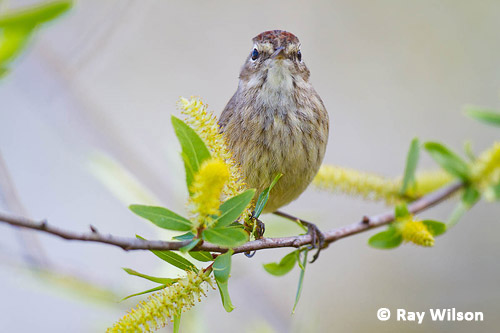
Palm Warbler (Dendroica palmarus)
The large number of visitors means the wildlife is even more habituated to the presence of humans than elsewhere in the park and the Anhinga Trail boardwalk affords the opportunity to view numerous species at extremely close range.
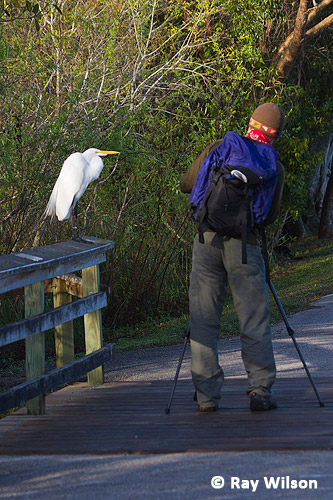
You don't need a big lens to photograph the birds here! |
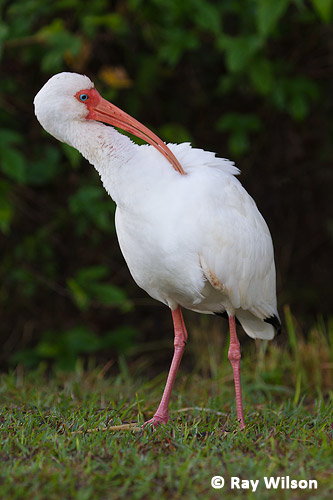
White Ibis (Eudocimus albus) |
During the 3 mornings and 2 afternoons that I spent here I observed 11 species of long-legged wading birds, with most of them at a distance of less than 10m.
Great Egret (Ardea alba)

Wood Stork (Mycteria americana) |
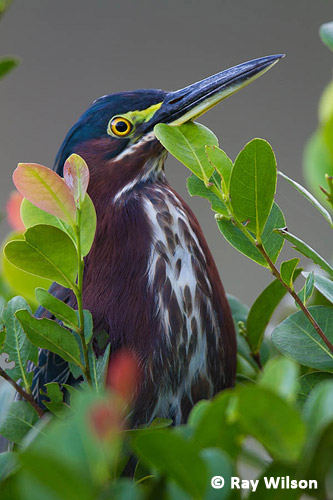
Green Heron (Butorides virescens) |
Green Heron (Butorides virescens)
The star bird was undoubtably the American Bittern that was lurking at the edge of the reeds. It never quite came out into the open, but it is still the best view I have ever had of this elusive species. I am very grateful to the kind birder who came running after me to point it out after I walked right past it without spotting it.
American Bittern (Botaurus lentiginosus)
Anhingas are particularly common, often perching on the railing of the boardwalk and not even bothering to fly when you walk past, making it easy to get close-up portraits of their heads.
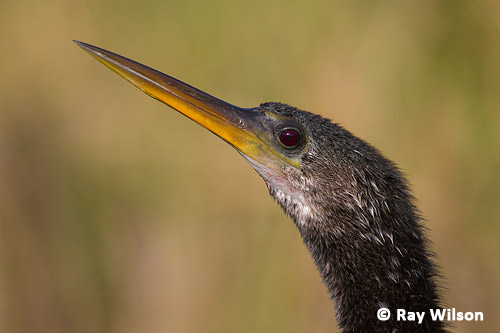
Anhinga (Anhinga anhinga)
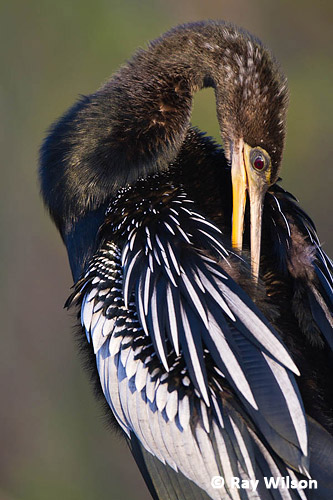 |
 |
Anhinga (Anhinga anhinga)
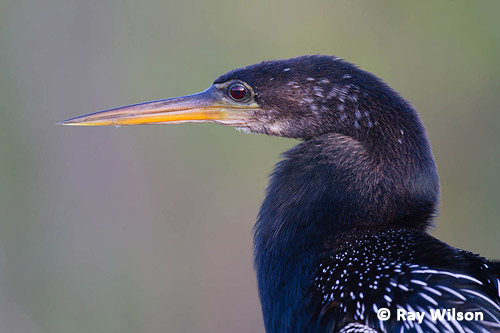
Anhinga (Anhinga anhinga)
Beautifully colourful Purple Gallinules are common among the lily pads where their favourite food appeared to be the large water-lily flower buds.
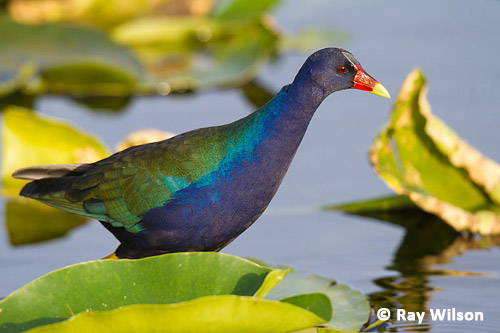
Purple Gallinule (Porphyrula martinica)
Pied-billed Grebes were also frequently seen at close range among the lilies.
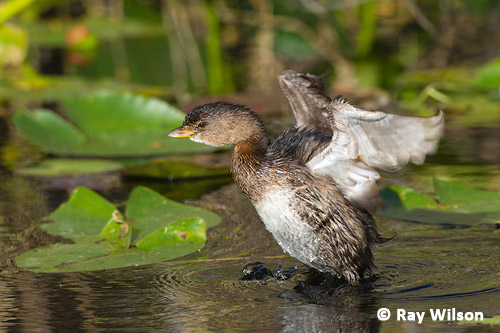
Pied-billed Grebe (Podilymbus podiceps)
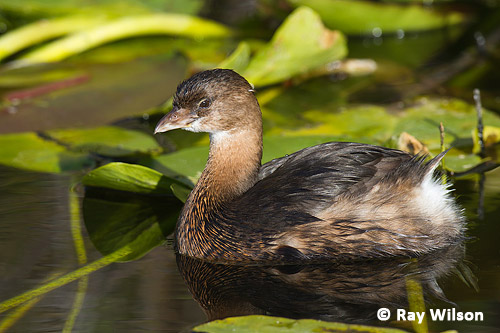
Pied-billed Grebe (Podilymbus podiceps)
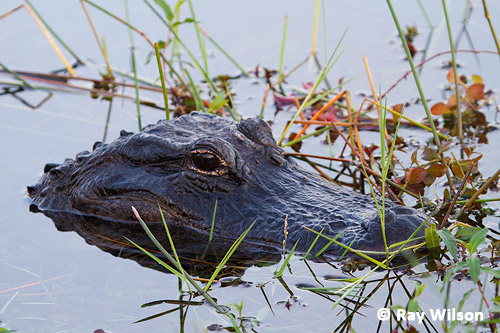
American Alligator (Alligator mississipiensis)
Alligators are common and there were usually at least a dozen visible around the boardwalk. One of the larger individuals (about 3m in length) favoured a spot at the base of the wall beside the bookstore which allowed the opportunity to safely take some extreme close-ups of its skin.
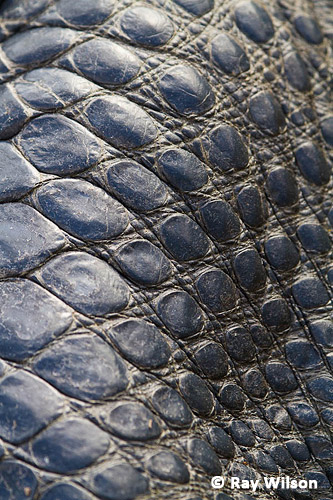
Alligator (Alligator mississipiensis) skin

Black Vulture (Coragyps atratus)
Both Black and Turkey Vultures are very common and soar on the thermals once the day starts to heat up, forming large flocks containing several hundred birds.
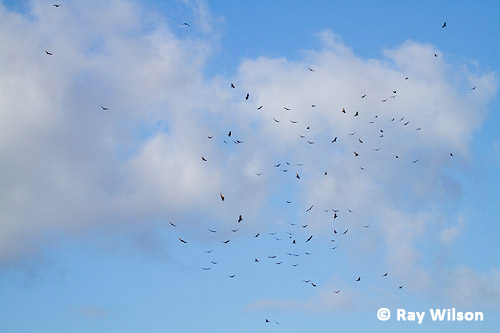
mixed flock of Black and Turkey Vultures
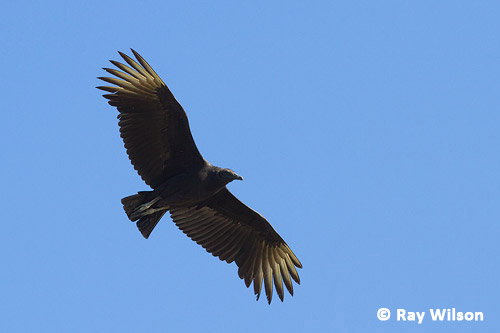
Black Vulture (Coragyps atratus)
Several Red-bellied Turtles could be found basking in the sun around the ponds and I also briefly saw a very large Florida Softshell swimming along the bottom of some deep water.
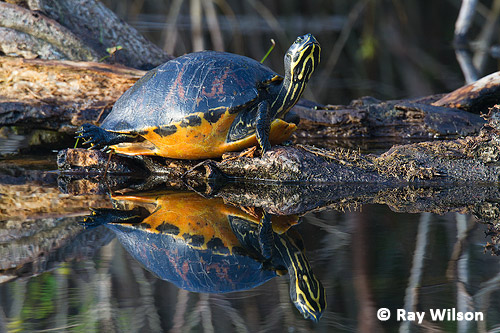
Florida Red-bellied Turtle (Pseudemys nelsoni)
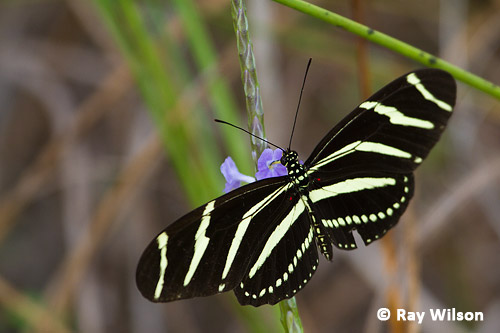
Zebra Longwing (Heliconius charithonia)
Ray Wilson owns the copyright of all images on this site.
They may not be used or copied in any form without prior written permission.
raywilsonphotography@googlemail.com
